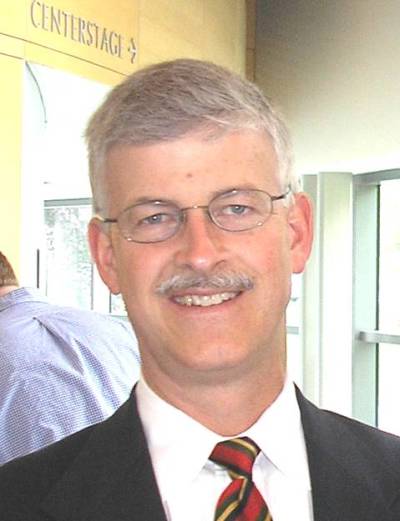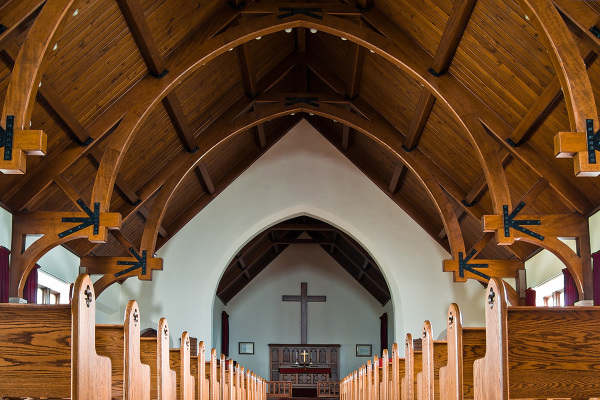Christian Reformed Church Takes 'Go and See' Attitude on Climate Disruption: Challenges Cornwall Alliance on Kenya

In November 2013, the Philippines' climate delegate, Jeb Sano, issued an appeal heard in capitals around the world. As his island nation staggered in the wake of the second "once-in-a-lifetime" storm to strike in the span of a single year, Sano begged the world: "To anyone who continues to deny the reality that is climate change, I dare you to get off your ivory tower and away from the comfort of your armchair. I dare you to go to the islands of the Pacific, the islands of the Caribbean and the islands of the Indian Ocean and see the impacts of rising sea levels…."
Go and see, he begged us. Go to the Himalayas and Andes, where poor people are being flooded by melting glaciers. Go to the deltas of the Ganges, the Amazon and the Nile, where livelihoods and hopes are being drowned. Go to the parched savannahs of Africa. Go and see what we are doing to our global neighbors.
And that's exactly what a North American evangelical denomination has committed itself to do. In the summer of 2012, the Christian Reformed Church of North America (CRCNA) overwhelmingly endorsed a declaration that "human-induced climate change is an ethical, social justice, and religious issue," and that climate pollution "poses a significant threat to future generations, the poor, and the vulnerable." And the church committed itself to "go and see" the impact of climate change on poor communities, and to tell others what they saw.
And so, in April 2013, the CRCNA's team of church leaders, missionaries and scientists set out for Kenya, to witness first-hand the impacts of climate change in East Africa. What we discovered was absolutely staggering. In farms, village churches and government offices, Kenyans from all walks of life told us a familiar story: Climate patterns were changing radically, destroying food supplies and family farms, spreading hunger, and driving migration into squalid urban slums.
We recounted much of what we discovered in a newly-released video series titled "Climate Conversation: Kenya." The series was designed for use in churches, to help Christians understand the impact of our actions on people in distant lands. And we knew that – unlike Kenya – back home in the U.S. and Canada, much of what we saw with unmistakable clarity would be considered controversial, and even political. And so we weren't surprised to find an article by Calvin Beisner, a spokesman for the libertarian Cornwall Alliance, to rebut what we reported from our visit.
"The relevant facts in Kenya don't support these claims," Beisner said. And to support his rebuttal, he presented data from a World Bank website indicating that for Kenya as a whole, neither average monthly temperature nor rainfall had changed materially over the last century. "Are poor Kenyans suffering from water shortages?" asked Beisner. "Yes. Is that because of global warming—manmade or natural? No. Is fighting global warming the solution? No."
We suspect that Beisner's article might have sounded persuasive and pragmatic to many readers, but not to us. And that's because he cited country-wide data to invalidate the experience of people living in microclimates which are experiencing massive changes – obvious to us when we went to look for ourselves.
Kenya consists of at least four climatic regions, with only one-quarter of its land accounting for virtually all of its agricultural output. Even within that region, we encountered epic floods in some quarters, and epic droughts in others. A few hours' drive from the capital city of Nairobi, we arrived in a small town only days after an average-year's worth of rainfall had deluged the area in the span of several weeks, driving floods and mudslides that swept four little girls to their death and threatened an important regional hospital. But just two hours' drive to the southeast, farmers recounted the impacts of crushing droughts that are becoming routine.
Of course, when record droughts occur alongside record floods, nation-wide average data can be thoroughly useless. In Kenya, it is useless indeed, as the biggest problem facing farmers is the increasingly erratic and unpredictable nature of rainfall in today's more extreme climate. Kenyan farmers told us, without exception, that nobody now knows when to plant, as once-predictable rainy seasons have succumbed to chaos. Nation-wide rainfall data misses the point entirely, both in Kenya and elsewhere.
Consider the World Bank data for the United States. During the last two decades, they show that country-wide average rainfall has increased 3.9 percent compared to twentieth-century averages. Now imagine the reaction you'd get from farmers in California's Central Valley, or firefighters in Texas, or city planners in Arizona, if you cited the World Bank to tell them there must be plenty of water.
People on the ground in Kenya just can't miss the effects of extreme weather afflicting the country: desperate farmers turning to conservation agriculture and agroforestry to deal with the onslaught of droughts; slum dwellers in Nairobi's enormous Kibera shanty-town arriving daily from failed and parched farms; engineers attempting to conserve what water they can; agroforesters planting drought-tolerant trees to slow the advance of deserts and scrub-lands.
And while it's not addressed by the World Bank's country-wide figures, Kenya's drought cycle has intensified decade by decade over the last forty years. In the 1970s, a reported 40,000 people were affected by droughts; in the 1980s the number rose to 200,000 people; then 3.0 million in the 1990s; and since 2000, roughly 19 million people have suffered the impact of four separate mega-droughts. Right now, Northern Kenya is in the grip of another crippling drought, with more than two million hungry people, and large losses of livestock.
Kenya's church leaders are among those most frustrated by climate denial and inaction back here in North America. Our CRCNA team met with Canon Peter Karanja, General Secretary of the Kenyan National Council of Churches – a prominent evangelical leader in the country. We asked him simply: "What should we tell our churches back in North America?"
"We are very concerned," replied Karanja, "especially about America. They are the most obstinate country when it comes to climate change. We don't know where it comes from. Maybe it comes from industry money, or maybe people just don't know about climate change…. Long after your life is over, your actions will have consequences on us. Many of them will be harmful consequences."
In Beisner's article, he proposed an alternative solution, which I confess that none of us had ever heard before: Dig up and burn millions of tons of Kenyan coal, and use the resulting electricity to pump rivers of water 250 miles uphill from Lake Victoria to farmlands in the Kenyan Central Highlands, some 2,000 feet higher in elevation. None of us has much expertise in the hydrological, ecological and economic obstacles that would confront such a feat of engineering – let alone the impact that all that diverted water would have on the Nile River, and the millions of downstream Ugandans, Sudanese and Egyptians.
But our Kenyan friends are incredulous at the idea. Over the last 25 years, they have watched lake levels falling sharply, and the shore line has steadily retreated. As a result, the outflow into the Nile River has been reduced, with serious consequences for Uganda's numerous hydroelectric power plants, not to mention lake fisheries on which millions depend. Syphon off more water for an improbable scheme to cure distant Kenyan droughts? They tell us this begs for a dose of on-the-ground reality – and a serious conversation with 175 million non-Kenyan Africans who depend on the Nile's life-giving waters.
The Kenyans communities we visited knew that their future depends on finding alternatives to ever-increasing levels of greenhouse gases, not burning more of the dirtiest fuel. And yet, as we read Beisner's rebuttal, we could only conclude that he believes they are desperate to solve an imaginary problem. The climate is not changing in Kenya, his article tells them; just look at the World Bank data.
Well, we take the World Bank seriously, including their own assessment of their climate change data. Last November, the bank issued a report warning that without concerted action to reduce carbon emissions from things like coal-fired power plants, the world is on pace for 2° Celsius in warming by mid-century, and 4°C or more by the time today's teenagers are in their 80s. "The task of promoting human development, ending poverty, increasing global prosperity, and reducing global inequality will be very challenging in a 2°C world," concluded the World Bank. "But in a 4°C world there is serious doubt whether this can be achieved at all."
The World Bank, we believe, is right about climate change, just like the U.S. National Academy of Sciences and every major scientific society on record, home and abroad. Kenya, like much of God's creation, is seriously threatened by the pollution that we continue to pump into the atmosphere. Much of this can be known from the comfort of our offices and studies – our "ivory towers."
But the Filipino delegate, Jeb Sano, is also right: We must leave our comfortable cloisters, and go and see for ourselves. That's what the Christian Reformed Church did in Kenya. Out of reverence for Christ and his world, these Christians will continue to go and see. And they will bear witness to what they see, whatever reception they encounter back home.
If Mr. Beisner would like to go and see for himself, we know many Kenyan Christians who would welcome the opportunity to show him what they are dealing with.





















